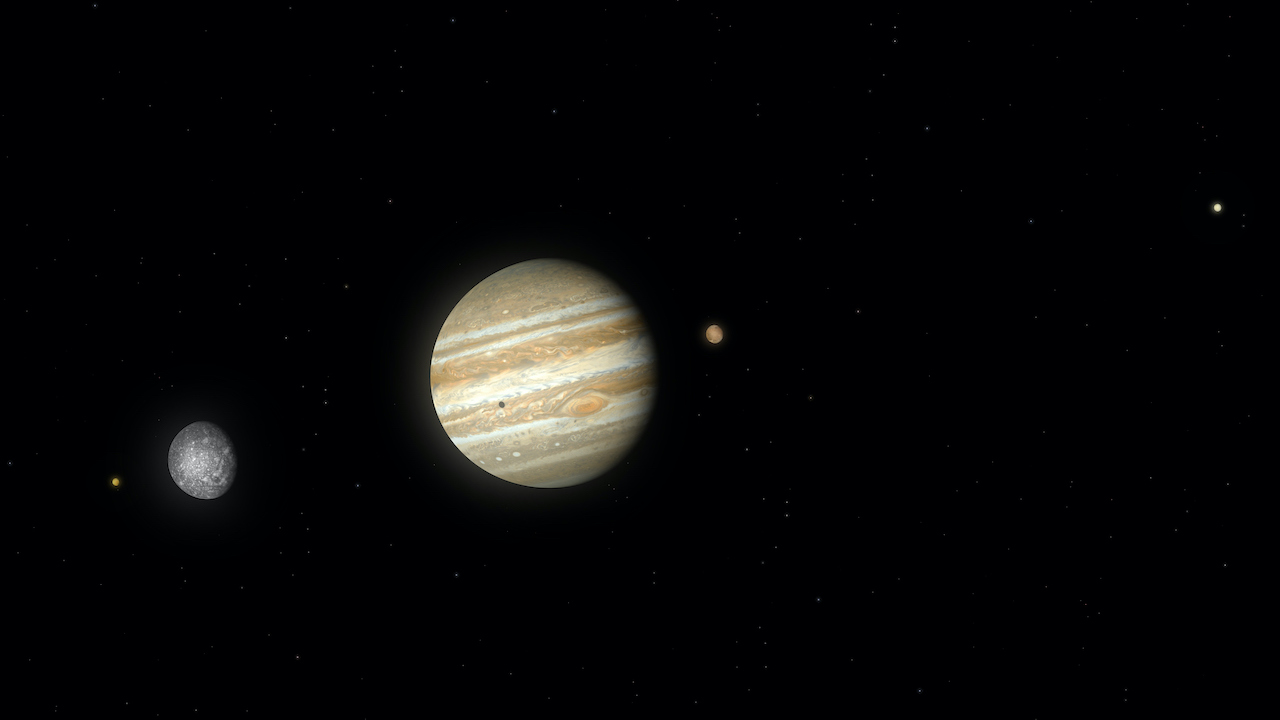Astronomers using the NASA/ESA/CSA James Webb Space Telescope have obtained and analyzed morning and evening transmission spectra of WASP-39b, a hot-Saturn exoplanet orbiting a star some 700 light-years away in the constellation of Virgo. The spectra are best explained by models in which the evening terminator is hotter than the morning terminator by 177 K.
This illustration shows what WASP-39b could look like, based on the current understanding of the planet. Image credit: NASA / ESA / CSA / Webb / J. Olmsted, STScI.
WASP-39b is a hot gas giant that orbits the G7-type star WASP-39 with a period of 4.1 days.
First discovered in 2011, the alien world has approximately the same mass as Saturn but is 50% larger.
The planet’s extreme puffiness is related in part to its high temperature (about 900 degrees Celsius, or 1,652 degrees Fahrenheit).
“WASP-39b has become a sort of benchmark planet in studying the atmosphere of exoplanets with Webb,” said Dr. Néstor Espinoza, an astronomer at the Space Telescope Science Institute.
“It has an inflated, puffy atmosphere, so the signal coming from starlight filtered through the planet’s atmosphere is quite strong.”
Previously published Webb spectra of WASP-39b’s atmosphere, which revealed the presence of carbon dioxide, sulfur dioxide, water vapor, and sodium, represent the entire day/night boundary — there was no detailed attempt to differentiate between one side and the other.
Now, the new analysis builds two different spectra from the terminator region, essentially splitting the day/night boundary into two semicircles, one from the evening, and the other from the morning.
The Webb data reveal the evening as significantly hotter, a searing 800 degrees Celsius (1,450 degrees Fahrenheit), and the morning a relatively cooler 600 degrees Celsius (1,150 degrees Fahrenheit).
“It’s really stunning that we are able to parse this small difference out, and it’s only possible due Webb’s sensitivity across near-infrared wavelengths and its extremely stable photometric sensors,” Dr. Espinoza said.
“Any tiny movement in the instrument or with the observatory while collecting data would have severely limited our ability to make this detection. It must be extraordinarily precise, and Webb is just that.”
“There is no planet like this in our Solar System, but most of the planets we observe orbiting distant stars are closer, with short orbits, like WASP-39b,” said Dr. James Kirk, an astronomer at Imperial College London.
“Now, we have been able to test our theories about these planets and, for the first time, directly measure an exoplanet’s morning and evening side over a wide wavelength range.”
This transmission spectrum, captured using Webb’s NIRSpec (Near-Infrared Spectrograph) PRISM bright object-time series mode, shows the amounts of different wavelengths (colors) of near-infrared starlight blocked by the atmosphere of WASP-39b. The spectrum shows clear evidence for water and carbon dioxide, and a variation in temperature between the morning and evening on the exoplanet. Image credit: NASA / ESA / CSA / Webb / R. Crawford, STScI.
Extensive modeling of the data obtained also allows researchers to investigate the structure of WASP-39b’s atmosphere, the cloud cover, and why the evening is hotter.
While future work by the team will study how the cloud cover may affect temperature, and vice versa, astronomers confirmed gas circulation around the planet as the main culprit of the temperature difference on WASP-39b.
On a highly irradiated exoplanet like WASP-39b that orbits relatively close to its star, researchers generally expect the gas to be moving as the planet rotates around its star: hotter gas from the dayside should move through the evening to the nightside via a powerful equatorial jet stream.
Since the temperature difference is so extreme, the air pressure difference would also be significant, which in turn would cause high wind speeds.
Using General Circulation Models, 3D models similar to the ones used to predict weather patterns on Earth, the astronomers found that on WASP-39b the prevailing winds are likely moving from the night side across the morning terminator, around the dayside, across the evening terminator and then around the nightside.
As a result, the morning side of the terminator is cooler than the evening side.
In other words, the morning side gets slammed with winds of air that have been cooled on the nightside, while the evening is hit by winds of air heated on the dayside.
The research suggests the wind speeds on WASP-39b can reach thousands of km an hour.
“This analysis is also particularly interesting because you’re getting 3D information on the planet that you weren’t getting before,” Dr. Espinoza said.
“Because we can tell that the evening edge is hotter, that means it’s a little puffier. So, theoretically, there is a small swell at the terminator approaching the nightside of the planet.”
The study was published this week in the journal Nature.
_____
N. Espinoza et al. Inhomogeneous terminators on the exoplanet WASP-39b. Nature, published online July 15, 2024; doi: 10.1038/s41586-024-07768-4
This article is based on press-releases from NASA and Imperial College London.
Note: This article have been indexed to our site. We do not claim legitimacy, ownership or copyright of any of the content above. To see the article at original source Click Here















